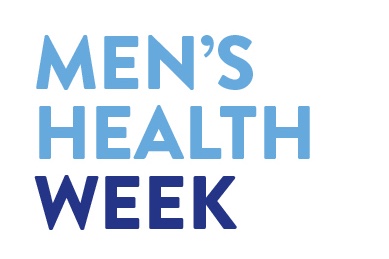Too many men are overweight – they don’t realise (and women don’t realise either) – and it’s killing them
- 67.8% of men are now overweight or obese vs. 58.1% of women. 26.9% of men are obese vs. 26.8% of women. (HSE 2015).
- The National Child Measurement Programme shows boys are now more likely to be overweight or obese than girls at Reception (22.7% vs. 21.5%) and Year 6 (36.0% vs. 32.3%). (NCMP 2015/16). The 2015 Health Survey for England of children 2-16 shows a similar gap: 30% vs. 26%.
- In general, men are less likely to perceive themselves – and women are less likely to perceive men – as too heavy.
- In the “Attitudes to Obesity” report taken from the 2015 Social Attitudes Study:
- People tended to overestimate what obesity means in terms of body size
- · 54% correctly identified when a woman is obese
- · 39% correctly did this for a man
- Among those men whose self-reports of weight and height placed them in the ‘obese’ category, just 25% of men said that they were “very” overweight, whereas 35% of obese women did so.
- Similarly, 77% of apparently overweight women said they are either “very” or “a bit” overweight, whereas, amongst overweight men, the equivalent figure was 71%.
- People tended to overestimate what obesity means in terms of body size
- In the 2013 Health Survey for England
- Only 45.1% of men perceive themselves to be too heavy (vs. 53.4% of women) and only 40.4% are trying to lose weight (vs. 55.7% of women).
- 44.3% of overweight men think they are too heavy vs. 68.7% of overweight women. 42.1% are trying to lose weight vs. 66.4% of women.
- 89.6% of obese men think they are too heavy (and 10.4% of overweight men think they are fine) vs. 96.1% of obese women (and 3.9% of obese women think they are not overweight or obese). 72.4% vs. 79.8% are trying to lose weight.
- 80.4% of men with a waist > 102 cm think they are too heavy vs. 82% of women with a waist >88cm. 62.9% vs. 71% are trying to lose weight.
- In the 2012 Health Survey for England, 22% of overweight or obese boys consider themselves to be too heavy vs. 29% of overweight or obese girls.
- In the “Attitudes to Obesity” report taken from the 2015 Social Attitudes Study:
Men’s excess weight – especially round the belly is leading directly to higher levels of diabetes and cancers, such as prostate cancer.
- Men get diabetes at a lower BMI (N Sattar et al. 2011) and are the majority of those with diabetes (9.6% of men have diabetes vs. 7.6% of women).
- There is strong evidence that being overweight or obese increases the risk of advanced prostate cancer.
(World Cancer Research Fund International/American Institute for Cancer Research Continuous Update Project Report: Diet, Nutrition, Physical Activity, and Prostate Cancer. 2014. Available at: www.wcrf.org/sites/default/files/Prostate-Cancer-2014-Report.pdf)
Services and health professionals are also failing men.
- Among 90 local authorities who responded to a 2017 Men's Health Forum FOI request, only 23% of tier 2 adult local authority weight management participants in 2016/17 were male. Around half (46 out of 90) were taking initiatives to reach and engage men more effectively. A surprising number (24%) of local authorities providing services still aren’t tracking the gender of people who use their services. (Source: Men's Health Forum FOI 2017).
- Despite the high level of men (and women) being overweight or obese, referral rates from the NHS Health Check are shockingly low – especially for men. 2.2% of men doing NHS Health Checks were referred to weight management services vs. 3.5% of women. (Source: Men’s Health Forum FOI 2015).
- Men are still a minority (26% in 2013) of those receiving bariatric surgery – although this has increased from 16% in 2006.
“An important trend since the inception of the United Kingdom registry in 2009 has been the increasing proportion of men seeking surgery. In 2006, 16% of those having primary procedures were men, while in 2013 the proportion had risen to almost 26%. It is important to recognise that while men in the United Kingdom are more likely to be overweight or obese, and the rates of obesity (BMI >30 kg m-2) for men and women are similar; women dominate the class III obese category by around 2:1 (1.5% for men and 3.0% for women). Men who have surgery tend to be a little older and have, on average, a higher BMI than women, and they make up just 10% and 24% of those having surgery in the class I and Class II ranges respectively. Therefore, the increase in the proportion of patients who are men, from 16% to 26%, represents a major step towards gender equity in those electing to have surgery, especially for men with Class III obesity.” (UK National Bariatric Surgery Register).
Class I obesity is defined by a BMI of 30-34.9 kg/m2. Class II obesity is defined by a BMI of 35-39.9 kg/m2. Class III obesity is defined by a BMI of 40 kg/m2 or more. (NICE).

